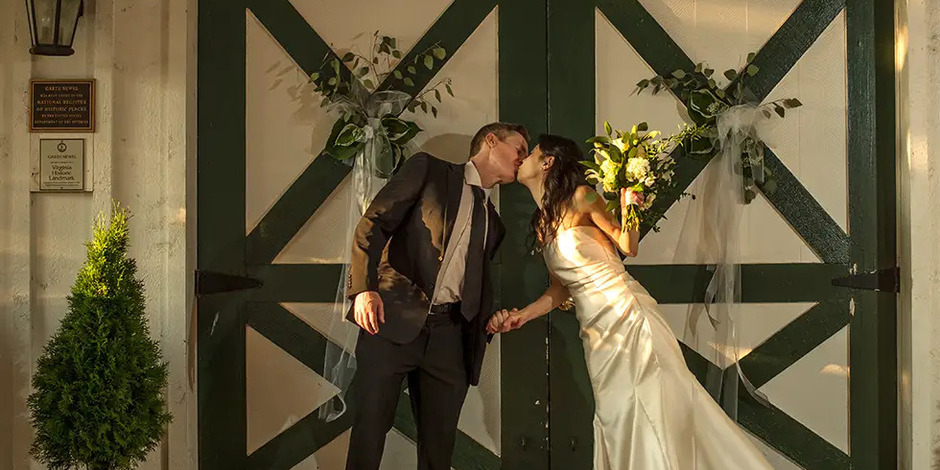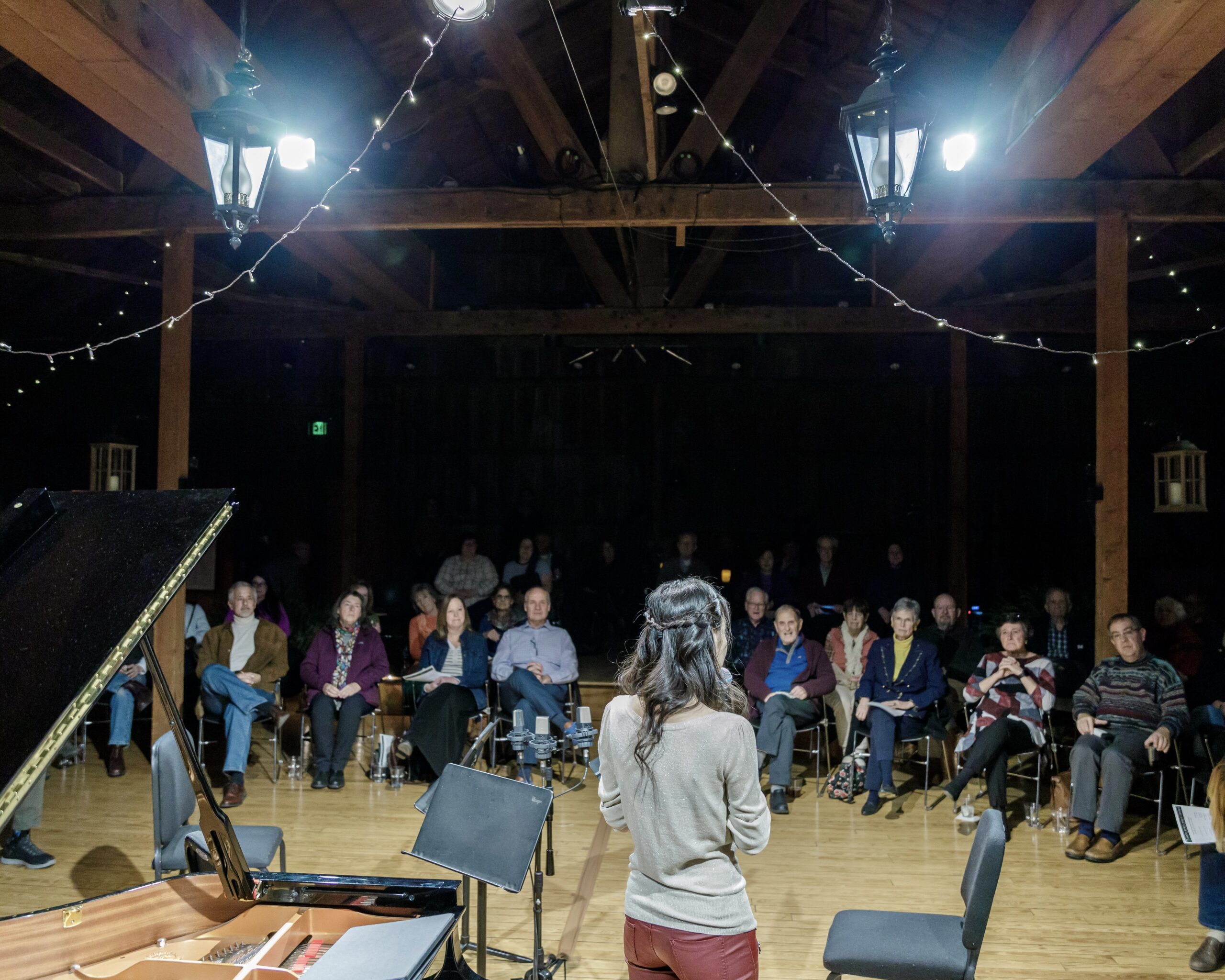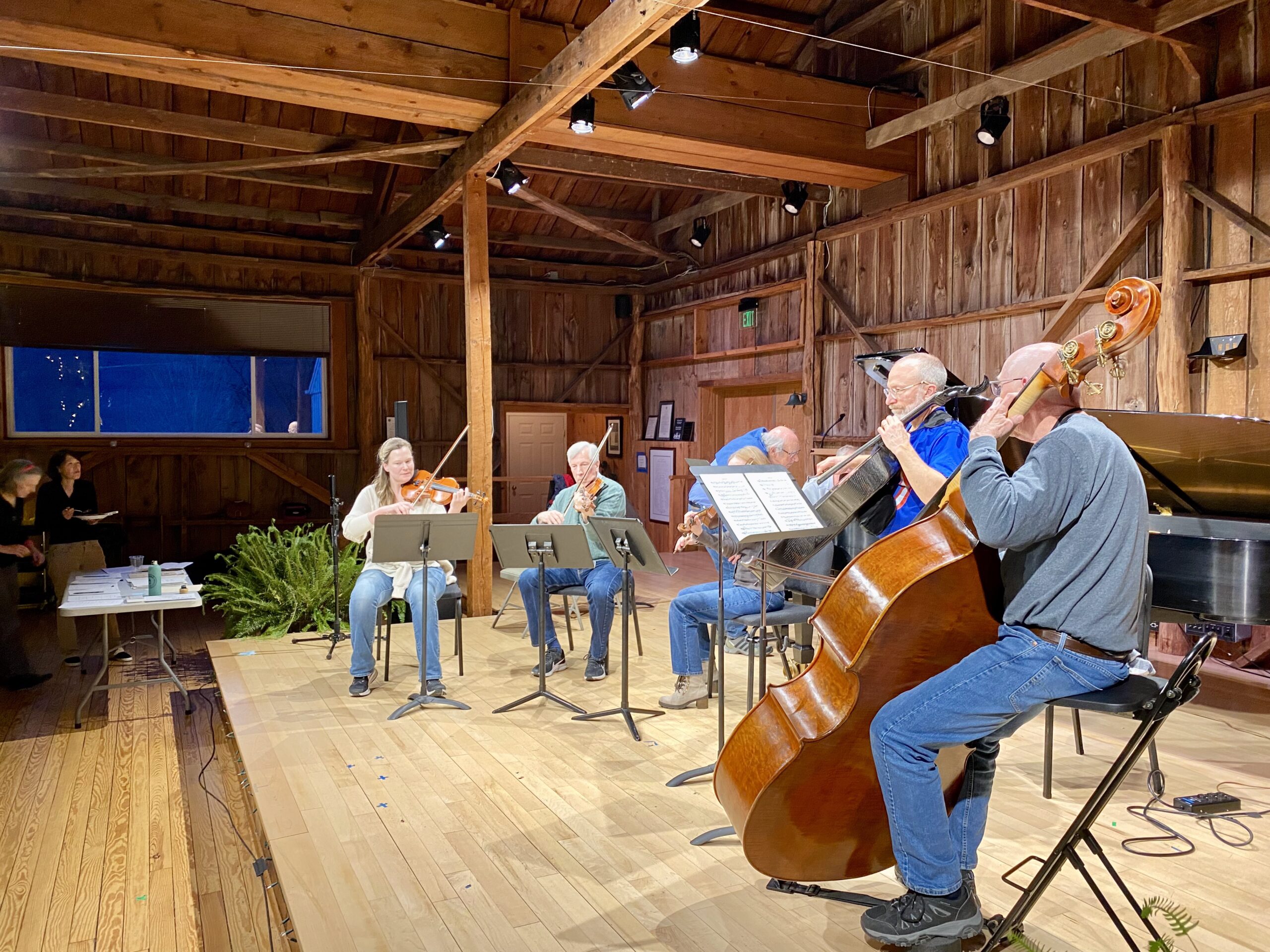In 2016, I wrote an excited post about Lera Auerbach for this blog, in which I gave a very subjective listing of some facts of her life that I had deemed were fascinating. If some nonsense words from 4 years ago bring nothing to mind for you, here they are again. It’s very important you get a refresher.
She has a teacup dog. As one of the visiting composers-in-residence at University of Michigan, she would carry around this dog everywhere she went, under her arm, whispering and kissing it between coachings and rehearsals. It was very cute, and complemented her own diminutive stature.
She is a poet and author! She’s published 6 books (maybe even more, I keep finding more titles of hers-update your websites people!)
- The titles of these books give me immediate book lust: Aphorisms and Artworks, Essays on Music and Literature, Hannover Notebook: Selected Poetry and Prose, Sorokolunie (Forty Moons): Poetry and Prose 1984-1994, Stairs To Eternity: Selected Poetry and Prose, Excess of Being. Composer/Pianist/Poet/Author – I guess this woman doesn’t sleep.
- She also is an artist! Many of her works have this captivating creepiness. Absolutely visceral. Gnarled, emotive, and you can’t look away. Composer/Pianist/Poet/Author/Artist…maybe she’s also an inventor and found a way to put more hours in the day.
- When she first moved to the US to study that she couldn’t afford subway fare, so she just walked 100 blocks to school. That’s 10 miles of walking everyday. NO BIG DEAL. I mean, I love walking in NYC, but this is pre-ipod or podcasts.
Besides wincing at my attempts to be your chatty neighbor, the reason I rehashed bad writing of the past was to bring attention to the last bullet point. Because this period of poverty, where Auerbach could not even afford the economical travel option of the subway, was the period during which she wrote most of her first piano trio. In looking up more information about her trio, which we will be performing this coming Saturday, Feb. 8th, on the first pub concert of Auerbach, Hors d’oeuvres, and Allagash Ale, I realized that she was also only 17, and that her move to America in 1991 was actually a much more serious and life altering decision to defect from the then crumbling Soviet Union
So while Lera’s first piano trio was written when she was ostensibly in her teens, the maturity and deftness in which she handled the musical material is perhaps less astonishing considering that she had to grow up really fast. Of the piano trio’s composition, Lera said:
“In 1991, at the age of 17, during a concert tour in America, six months before the fall of the Soviet Union, I decided to defect. The following year, 1992, when the first two movements of this trio were written, was perhaps the most difficult of my life. I was alone, and did not know whether I would ever see my family again. Many of the works of that period were not completed until a few years later; this trio is one of them. The last movement, Presto, was written four years later, in 1996”.
The Piano Trio starts with a succinct Preludium Misterioso of impish counterpoint that feels neo-baroque, except for brief outbursts and colorful string colors that subversively insert mischief into the pleasingly simple musical line. For example:
“As the Prelude moves toward its peaceful C major close, the cello plays eerie glissandos, passages where the fingers slide rapidly up and down the strings. The score says: “Imitating the cries of seagulls.” (Auerbach 2009)
The Prelude has an interrupted feel to it; like someone tiptoeing curiously and suspiciously around the traditions of clear classical form.
Auerbach calls the 2nd movement, a moving and expressive Andante, “The emotional center of the work. It is a lyrical and tragic dialogue between violin and cello, with piano providing a sustained harmonic pedal.” Even more fascinating is that this sustained harmonic pedal in the piano is built out the same thematic material of the Prelude, but slowed down into a veil of beautiful melancholy.
The third movement – Presto – is action packed, an exciting mania that, in the composer’s own words, “requires virtuosity in all instruments.” Brilliantly, Auerbach combines all the previous musical material of the Prelude and Andante into this movement, and she describes the climax to be where “all the main themes of the trio become one.”
It is clear that Auerbach has great focus in her compositions – the piano trio is built to have a continuous crescendo to the end. She explains further that
“Crescendo is not meant in the dynamic sense, but rather as a buildup of the gravity of the material: the first movement is a short Scherzo, the second an emotionally-charged Andante, and the third, Presto, a toccata with its climatic modulation to C major.”
Lera Auerbach’s Piano Trio No.1 will be played by Teresa, Isaac, and I this Saturday, February 8th, on the first concert of our Winter Chill February series: Auerbach, Hors d’oeuvres, and Allagash Ale. There is no ticket price to come and enjoy what will be a great time! Also on the program will be Arvo Pärt’s entrancing Fratres for violin and piano, (which you will recognize if you were a fan of the movie There Will Be Blood), as well as a very fun groovy piece called Living Room Music by John Cage, (think Blue Man Group).














